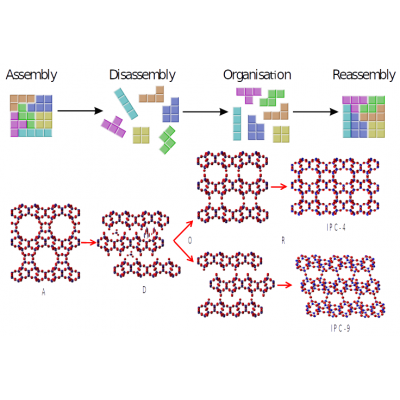Understanding the ADOR process using experiment and computation
Global PhD Application between University of St Andrews and Charles University
Contact person and project leaders:
Theory – Prof. Petr Nachtigall, Faculty of Science, Charles University, petr.nachtigall@natur.cuni.cz, orcid.org/0000-0002-1628-7275
WWW: http://physchem.cz/research/nanomaterials-modeling, www.cucam.cuni.cz
Research group(s): Charles University Center for Advanced Materials & Nanomaterial Modelling
Leader of the research group(s): Prof. Petr Nachtigall, Department of Physical and Macromolecular Chemistry
Experiment – Prof. Russell E. Morris, Bishop Wardlaw Professor of Chemistry at the University of St Andrews, rem1@st-andrews.ac.uk ,
WWW: https://rem.wp.st-andrews.ac.uk
Project summary:
Zeolites are some of the most important industrial chemicals known. For the last 60 years zeolites have been prepared using crystallisation techniques but in the last few years a collaboration between St Andrews and the Charles University in Prague has produced an entirely new method of manufacturing zeolites. This new process, called the assembly-disassembly-organisation-reassembly (ADOR) method,1,2 is significantly different from traditional zeolite synthesis and can produce materials that were previously thought to be ‘unfeasible’,3 opening up many new opportunities that were not possible before.4 While the invention of the ADOR process is a major step forward in zeolite materials science, real challenges still remain in our quest to fully understand the complex chemical reactions that occur at the atomic scale during the process itself.

Figure 1 The ADOR process. The top panel shows a schematic of the process, which involves the Assembly of a parent, followed by Disassembly into its constituents, before Organising the constituents into a new relative orientation before final Reassembly into a new structure. The lower panel shows how this concept can be applied to zeolites. Assembling a parent, before disassembly into layered building blocks. The next step is then to organise these layers with respect to each other before the final reassembly into new materials. Different organisations lead to the different possible final zeolites. In this project we will study the disassembly step in detail to understand the atomistic mechanism.
In this Global PhD project (cotutele, double-degree PhD) we will look to understand the disassembly process using two different approaches – computational simulation and in situ spectroscopy. The student in this project will spend half their time at the Charles University in Prague learning and applying ab initio molecular dynamics approaches to understand the mechanism of ADOR process. The other half of the project will be spent at the University of St Andrews learning and applying experimental spectroscopic techniques to the process while it is occurring (in situ). The combination of experimental and computational techniques is a powerful approach to modern chemical sciences and this project will take advantage of the various skills at the partner institutions: Nachtigall at the Charles University has computational expertise that is not available at St Andrews,5,6 and Morris at St Andrews University have complementary experimental skills that are not available in Prague.
Profile of an ideal candidate:
Required - MSc. or equivalent in Chemistry, Physics or a related field;
Advantageous, but nor required - background in Statistics, Statistical Mechanics and Quantum Chemistry/Physics; experience with molecular simulations and Linux.
Relevant publications of the project leader:
Roth, W.J., et al. A family of zeolites with controlled pore size prepared using a top-down method. Nature Chem. 5, 628 (2013)
Morris, R.E. and Cejka, J. Exploiting chemically selective weakness in solids as a route to new porous materials Nature Chem. 7, 381 (2015)
Mazur, M., et al. Synthesis of 'unfeasible' zeolites. Nature Chem. 8, 58-62 (2016)
Morris, S.A. et al. In situ solid-state NMR and XRD studies of the ADOR process and the intriguing structure of zeolite IPC-6 Nature Chem. 9, 1012-1018 (2017)
Heard, C.J., et al. Towards operando computational modeling in heterogeneous catalysis, Chem. Soc. Rev. 47, 8307-8348 (2018)
Heard, C.J., et al. Fast Room Temperature Lability of Aluminosilicate Zeolites, Nature Commun. 10, 4690 (2019)
Current research grants of the project leader:
Charles University Center for Advanced Materials, supported my Ministry of Education, Youth and Sports of the Czech Republic within “Excellent Research Teams” framework, project No. CZ.02.1.01/0.0/0.0/15_003/0000417 (2017-2022)
Czech-Bavarian Project – Design Principles for Structural Materials – Synthesis, Characterization, Application (2017-2020)
“ Stability of zeolites under extreme conditions: hot liquid water and steam”, GA ČR 19-21534S (2019-2021)